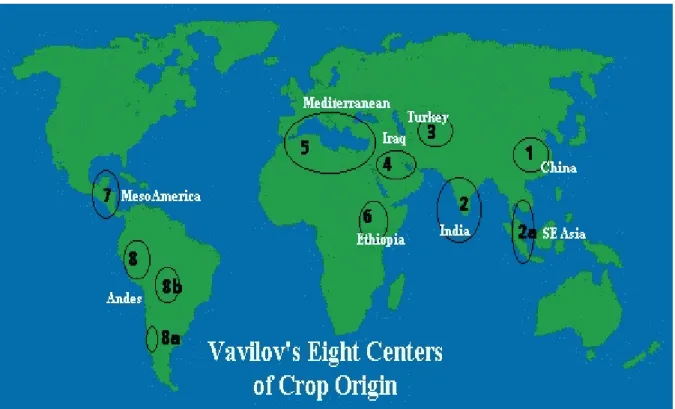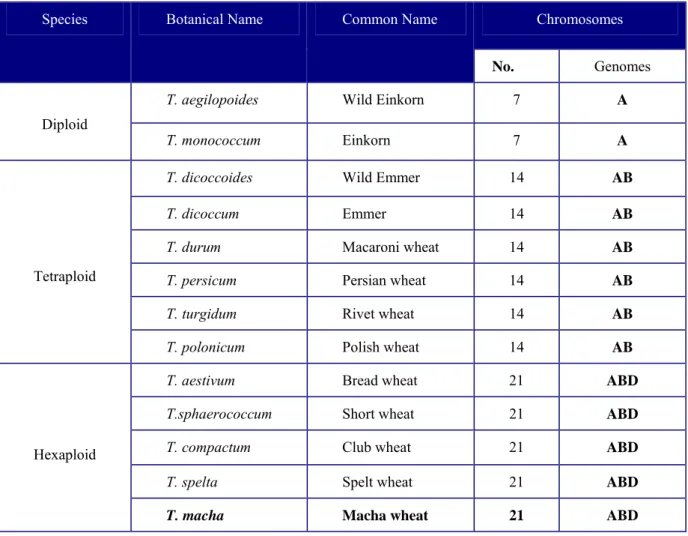Vavilov, a Russian scientist and pioneer of the plant genetic resources movement, proposed the idea that many cultivated plants originated in the regions of the world called centers of gene or diversity, where these plants were domesticated and then dispersed and spread to other areas of the world . For several of these crop species, the wild ancestors still exist at the center of origin. Similarly, rice served as the important grain for civilization in Southeast Asia and corn for civilization in the New World.
But, both in the legume and in the cereals, the disintegration of the wild mode of seed dispersal and the loss of the regulation of germination took place in the same way. Agriculture began 7,000 to 13,000 years ago, somewhere in the well-watered hills of the Indus, Euphrates, Tigris, and Nile rivers. It was the planting of the seed that led to the most profound changes in the lives of human beings.
Ancient agriculture mainly involved the domestication of selected wild crops and their cultivation in the field under human management. Cereals were first domesticated around 9000 BC. n. no. in the Fertile Crescent in the Middle East. The AFLP technique is based on selective PCR amplification of restriction fragments from the entire digested genomic DNA. The technique involves three steps: (i) DNA restriction and ligation of oligonucleotide adapters, (ii) selective amplification of sets of restriction fragments, and (iii) gel analysis of the amplified fragments.
Knowing the number of QTL that explain variation in a phenotypic trait tells us about the genetic makeup of the trait.

Origin and Introduction of Cereals
Wild emmer and cultivated emmer have been found in the Neolithic sites of the Mureybit and Ali Kosh respectively. More than half of the people of the world eat rice as the main part of their diet. Lothal is considered a southward extension of the Harappa and Mohenjo-daro culture of the Indus Valley Civilization.
Maize or corn is one of the three main cereals that are the main sources of energy in the human diet. Cob corn is considered a primitive species and is considered one of the ancestors of corn. It is not cultivated, but is preserved in some locations to understand the origins of the earliest cultivated maize.
Crossing legume corn with popcorn has helped produce a genetic reconstruction of the ancestral form of corn. They have morphological and cytological features of the most primitive species and can be named. There is considerable evidence supporting the view that corn is the. gift of the New World to humanity'.
There are many interesting observations regarding the origin of maize:- (i) The ancestor of modern cultivated maize is maize itself and not any other related grass. When the first skyscraper was built in Mexico, fossil pollen grains were found at a depth of 70 meters. The Tutus locus is highly pleiotropic and influences many different characteristics of the corn plant. Some characteristics of these grasses can be found in cultivated maize. v) The recent discovery of a perennial grass, identified as Zea diplo-perensis, provides important facts about the relationships of Zea mays with other species of maize.
Barley is one of the oldest cereals, cultivated by man since the dawn of civilization. In the northeast African center, the two-row type of barley predominates. Carbonized grains from a Swiss lake dwelling and a jar of six-row barely are among the oldest examples of this grain preserved in a world museum.
Cultivated rye probably originated from wild perennial weeds of the genus Secale in Central Eurasia. The center of origin of rye overlaps with the center of origin of other bread grains, wheat, barley and oats.

Origin and Introduction of Legumes (pulses)
The common cultivated species Avena sativa is not known in the wild and is believed to be derived from the wild oat Avena fatua L. It is believed to have originated in western and southwestern Asia - in the area between the Caucasus and the. It is now widely cultivated in India, Indonesia, Myanmar, parts of Central Africa, and in the arid southwestern United States to exploit its industrial potential.
Lentils are found along with field peas and horse beans on the earliest agricultural areas in the Near East. It is native to the New World and is cultivated in many parts of the tropics and subtropics, and in temperate regions. The remains of common beans and lima beans have been recorded from archaeological deposits in the intermontane Peruvian valley and date back to approximately 6000 BC.
The common bean was introduced to Europe by the Spanish and Portuguese in the sixteenth century and was later transported to Africa and other parts of the world. Like Phaseolus mungo, Phaseolus aureus has also been cultivated in India for centuries and has not been found in the wild states. As is the case with many other widely cultivated plants, Pisum sativum has not been found as a wild plant.
The Russian botanist Vavilov (1951) suggested that garden peas may have originated in Ethiopia, or in the Mediterranean and Central Asia with a center of diversity in the Near East. It was probably domesticated in Central or Western Asia and later spread to other parts of the world. The culture is widely cultivated in countries with a cold climate, especially in the northern hemisphere.
In Africa this legume is widespread both in the wild and in cultivation. It was brought to the West Indies in the sixteenth century by the Spanish and introduced to America around 1700 AD. But several other species grow in the wild and all of them produce geocarpic fruits.
It was commonly found in the West Indies, but not in the United States in pre-Columbian times. Peanuts were introduced to the Old World in the 16th century when the Portuguese took the seeds from the Americas to Africa.
Acknowledgments